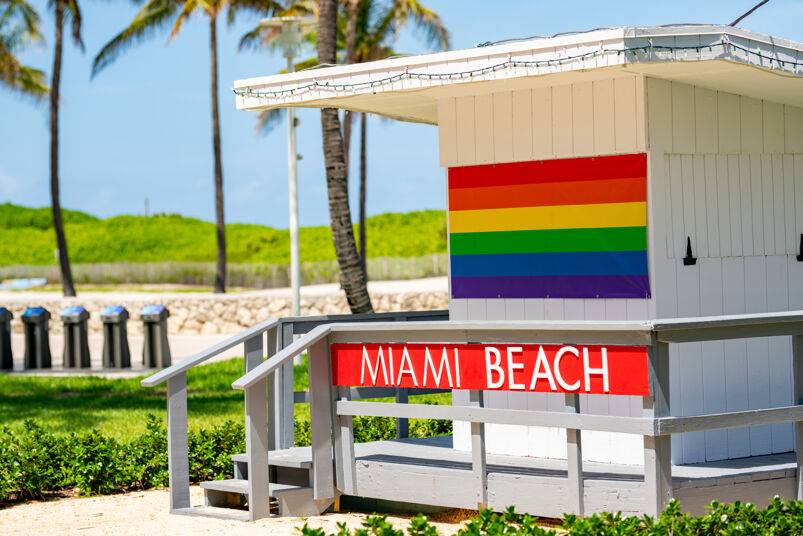
Wandering the luscious streets of Miami Beach, it’s obvious why this coastal paradise magnetizes over a million LGBTQ+ travelers each year.
The city’s unhinged with glamour.
But Miami Beach is more than just a sandy vacation metropolis; LGBTQ+ history has deep roots here, stemming from queer suffering, resilience, loss, and enduring joy.
Miami Beach is the unofficial gayborhood in Miami
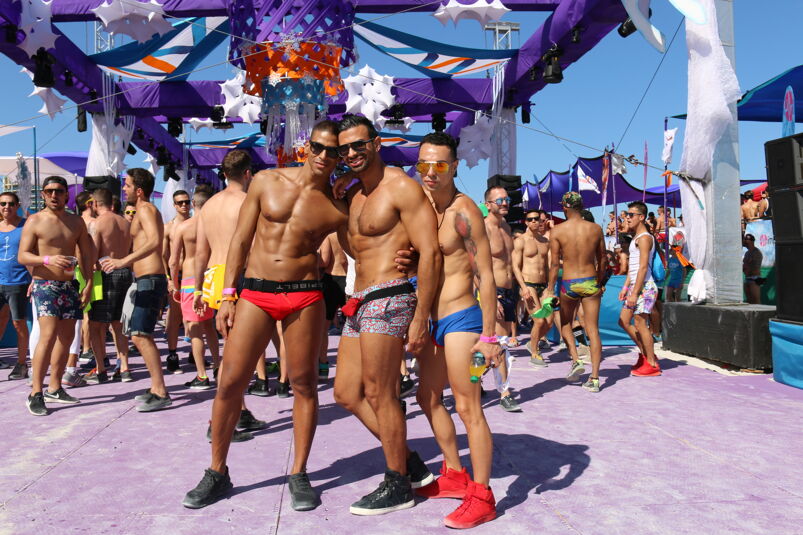
While many LGBTQ+-friendly cities have ‘gayborhoods,’ Miami doesn’t follow suit.
But that’s because the gays have sprinkled themselves throughout Miami Beach, the unclichéd heart of the city, and no single social group can take it over. Consider it like Florida’s Manhattan.
Although many people use Miami and South Beach interchangeably, it’s like summarizing New York City with Times Square, except it doesn’t suck. Miami is filled with residential suburbs, so naturally, the gays gravitated to the most cosmopolitan focal point.
South Beach (SoBe) is the most known portion of the four beaches that comprise the nine-mile-long barrier island of Miami Beach. (For those looking to soak up the sun sans swimsuit, head up to clothing-optional Haulover Beach on the north end of the isle.)
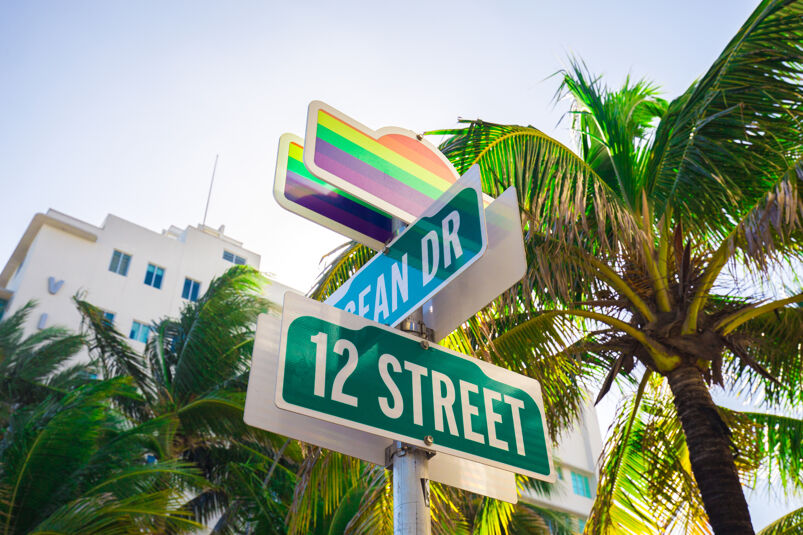
SoBe’s 12th Street is considered the gay section, especially for tourists. But that’s enough about oceanfront geography.
What lured gayness into the area was the bohemian lifestyle adapted to modern living. Miamians speak Spanglish, have their own slang, kiss on the cheek instead of shaking hands, and the culture feels like a nation within a nation.
Miami’s tourism and population has only grown since the pandemic, but the “golden age” of gayness started in the 1970s.
LGBTQ+ history in Miami Beach
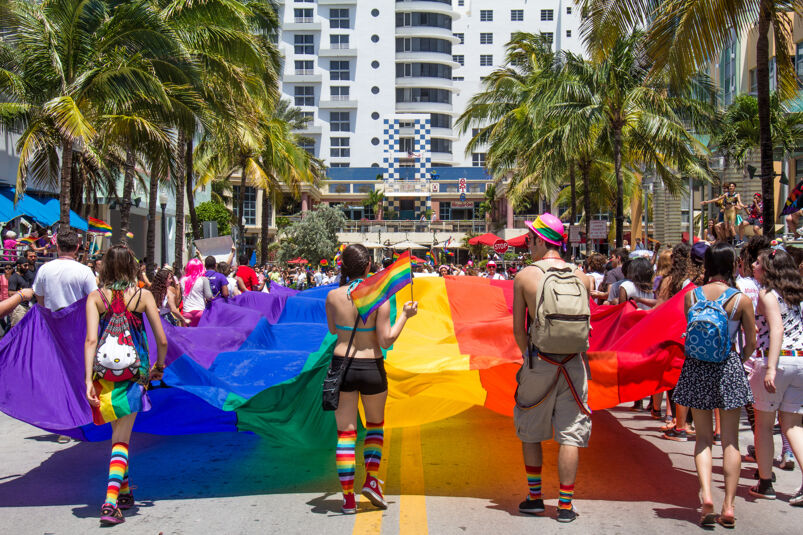
Actually, a gay nightlife scene can be traced in Miami Beach as far back as the 1930s. But it was during the 1970s when the LGBTQ+ community took its identity and fun by the horns.
The culmination of many societal factors contributed to the newfound widespread queer empowerment across the city. Here’s a quick timeline of historical LGBTQ+ events in Miami:
- The Christ Metropolitan Community Church was founded in Miami in 1970 as a congregation for gay and lesbian Christians, garnering hundreds of parishioners.
- In 1972, the Democratic National Convention was held in Miami, where, for the first time, there was a public speech about the rights of gays and lesbians.
- Gay club baths opened in 1974.
- Miami became one of 40 cities in the country to pass nondiscrimination ordinances against gays and lesbians in 1977.
- In 1985, the legendary White Party kicked off, earning the title of the season’s premier event across gay America.
- In 1997, Equality Florida was founded and became the largest statewide LGBTQ+ rights lobby organization.
- Former Miami Beach Mayor Matti Bower established Miami Beach Pride in 2008.
Queer history has a remarkable way of building on itself. Miami, Fort Lauderdale, and Key West have historically stood against hate with unyielding resistance.
The Vercase Era brought glamour to queer rights
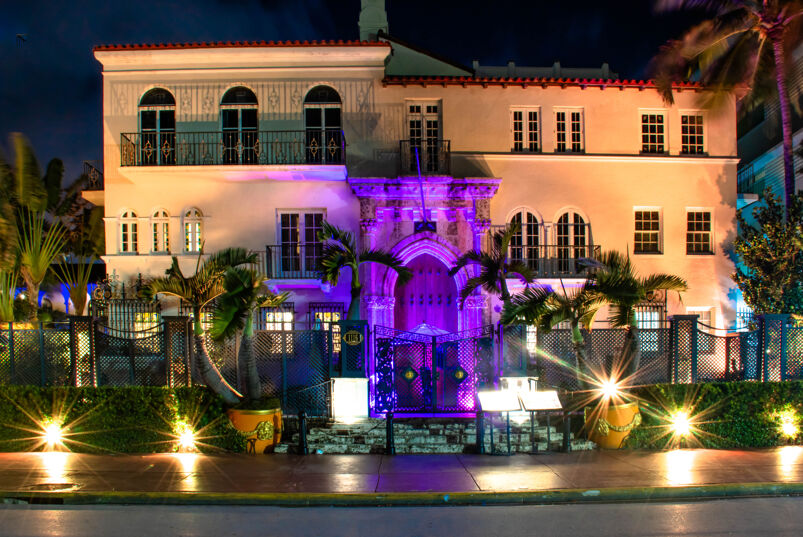
Once the 1980s rolled in, Miami Beach became a mecca for queers. Still, the height of its fabulosity arrived with one closeted gay man: Gianni Versace.
Some of the most expensive celebrity properties in the world will be found in the nearby unimaginably exclusive neighborhood of Star Island, but you can say Versace’s 1992 purchase and $33 million renovation of The Villa Casa Casuarina on Ocean Drive set the tone for residential luxury.
What became known as the Vercase Era, following the designer’s arrival, came glitz, glamour, and pastels. Celebrities and wealthy gays flocked to where stardom was sold as a lifestyle.
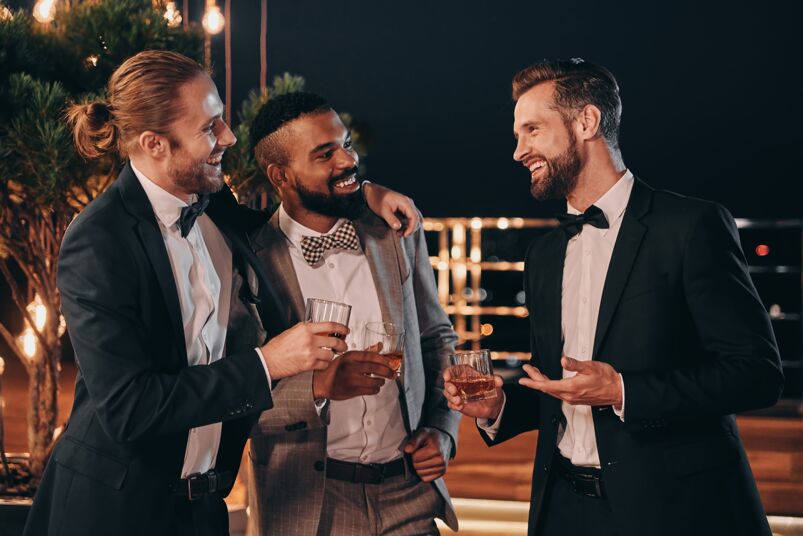
Miami Beach held its first LGBTQ+ press trip in 1997 before other cities even heard about pink tourism; coincidently, this was the year Vercase was shot dead in front of his mansion, now a historical site and fabulous restaurant.
The Versace Era cemented Miami Beach as the pinnacle of gay luxury, and in recent years, the city has been experiencing a reawakening.
Modern gay nightlife in Miami Beach
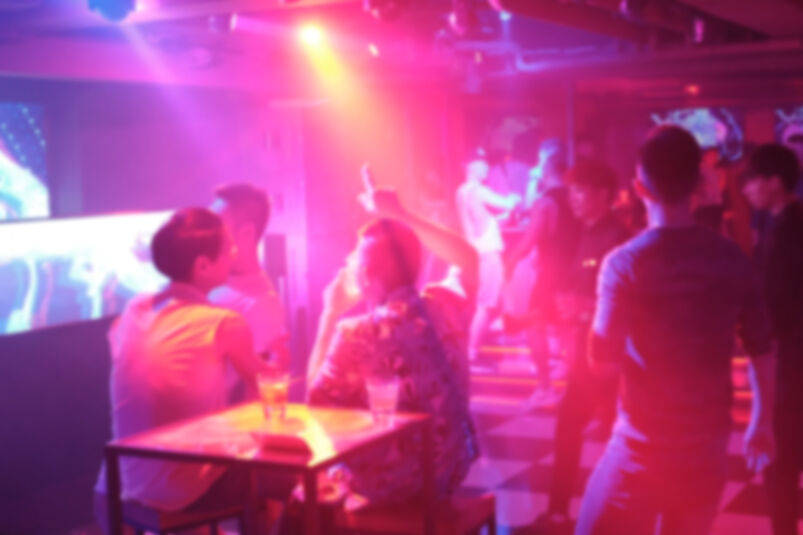
Miami Beach is notorious for having a new “It Girl” club every other week, its nightlife evolving rapidly to please a demanding and affluent clientele with more money than they know what to do with. But gay nightlife has seen a decline in gay spaces.
Miami Beach has more than 18,000 queer residents (180,000+ in the Miami metropolitan area), but it has a handful of gay bars. Of course, this is due to evolving ways gays socialize, shifting to events, raves, and circuit parties hosted at popular clubs, branding themselves gay for the occasion.
Still, every city needs gay bars, and we’re thankful for the ones that always open their doors for unapologetic queerness.
Gaythering is a somewhat recent addition to the gay scene & a hotspot for OnlyFans
Twist aged gracefully as the multi-level, go-to gay bar for tourists, but watch out for pickpockets
The newly expanded Nathan’s Beach Club keeps the queer locals well-hydrated all night long
Since launching in 1988, Palace has set the standard for drag brunch
Azucar is the gay Latin nightclub that always offers spice
Life’s a beach, and the gays are just playing in the sand
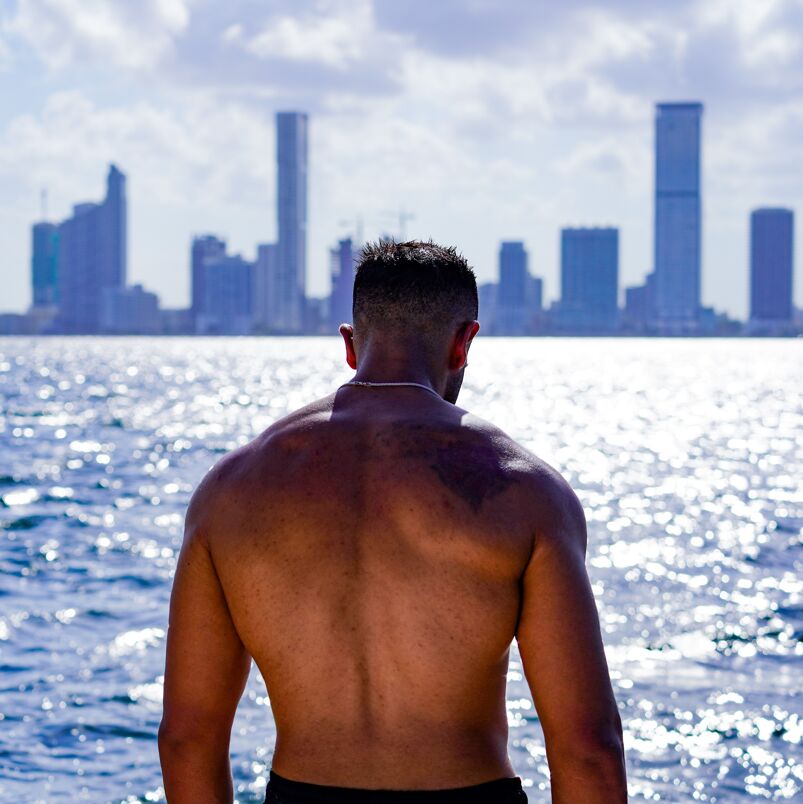
Miami Beach is undoubtedly the beloved arse most people think the sun shines out of in Florida. But its uniqueness changes depending on who you ask. There’s a reason outsiders conflate it as the actual city.
It channels the best aspects of New York and Los Angeles while manifesting with its own character.
We stan a city that dissociates itself from its governing body and embraces a queerer reputation and history.
And where the personalities and parties are unrivaled.
Come on, babe, Subscribe to the Queerty newsletter, and we can keep this party going!













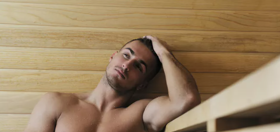


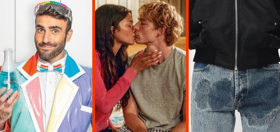


navyman636
One has to wonder whether your writer fully understands that Miami and Miami Beach are completely separate municipalities. As municipal governments go, they’re like oil and water. They do not mix well at all.
The old club baths is in the City of Miami, not Miami Beach.
I spent a good deal of time in both communities after Hurricane Andrew, in charge of FEMA’s recovery activities at historic sites. Miami, and the surrounding county, is surprisingly loaded with historic sites, or was. The pressure from developers and political corruption in local government has had a devastating effect on their survival. That pressure continues unabated. Sadly, the same can be said of Miami Beach’s world famous Art Deco historic district. It is, among other things, the world’s first historic district commemorating and dedicated to preserving 20th century architecture. Developers and their bought-and-paid-for political cronies are presently capitalizing on very real climate change threats and the resulting sea level rise to campaign for demolition of many of the contributing buildings in the historic district in favor of so-called ‘safe’ new high rises. It doesn’t bode well for the historic district. The unhappy phrase, ‘demolition by intentional neglect,’ is increasingly heard.
The origins of the Deco District’s popularity also lie in the matter of neglect. By the 1970s Miami Beach and its remarkable art deco architectural collection had become so severely run down by neglect, that staying there for any length of time had become surprisingly inexpensive, a truth that couldn’t possibly be said in the present day. The resurgence of interest in the area has sent costs of everything through the roof. That very popularity may end up killing the goose that has been laying so many golden eggs for decades. It is understood by everyone except the PR departments at the development firms, that the next direct or near-miss strike of a hurricane may collapse the whole area. After all, Miami Beach is just a barrier beach, composed only of sand.
As for the White Parties, I have many memories of their aftermath, when, as then-director of the county historic preservation office, I helped clean up literal mountains of trash littering the Deco District the day after. I especially remember the smell of vomit in the streets, and helping to pick used condoms from the formal gardens of Vizcaya, the historically protected robber baron mansion across Biscayne Bay.
I can’t wait to never go back to Miami.
abfab
Saving and worshiping and celebrating SOBE Art Deco architecture trumps all for me. And Lincoln Road was coming back at the same time. Thanks for mentioning these elements that Queerty left out. They left so much out.
SOBE was like one big open-air streetscape museum! Thanks navyman. I’ve never seen a collection like this.
Kangol2
Great post, navyman!